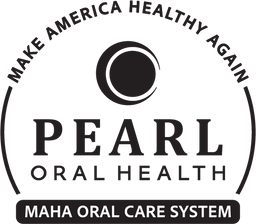Hypochlorous Acid, also known as HOCl, has a skin-friendly pH of about 6.3. HOCl as a singular compound only exists in water and the lowest p.h is about 3.0. Lower than 3.0, it changes into chlorine dioxide, lower than 2 it converts to chlorine gas.
People use HOCl for various purposes, such as in health care, water treatment, food safety, and general sanitation. It is not harmful, and you can use a mild HOCl concentration to cleanse everything from wounds to sanitizing your home.
How is HOCl Produced?

HOCl, produced through the method of electrolysis, using ordinary tap water, which contains dissolved sodium chloride (salt). This produces Sodium Hydroxide (NaOH) and Hypochlorous acid (HOCl). The resulting water is a known disinfectant and cleanser, produced through electrolysis, and Michael Faraday was the one who stumbled upon this.
How HOCl Eliminate Viruses?

HOCl is effective against viruses and germs, and use of this very property that helps fight pathogens. It makes a perfect stain remover and is an oxidizing agent. When hypochlorite interacts with bacteria, fungi, mold, and viruses, it oxidizes the molecules present in the cells of these germs, eliminating them.
Scientists reveal that the hypochlorous acid, which produces from the solution of water and sodium hypochlorite, can break down the cell membranes or walls of some germs. The hypochlorous acid also helps in the production of specific proteins in bacteria, which deters the proper functioning of bacteria.
Moreover, non-chlorine agents that are also oxidizing agents can help to disinfect some surfaces. But they are less effective than chlorine bleach. If you use chlorine bleach properly, then it will provide you with an effective and practical disinfectant.
Hypochlorite (Chlorine Bleach) vs. Hypochlorous Acid (HOCl)

They look similar, but hypochlorite (OCl-) and hypochlorous acid (HOCl) are very different. Hypochlorite (OCl-) carries negative electrical ions, whereas hypochlorous acid (HOCl) carries no electrical charge.
The hypochlorous acid can move quickly and can oxidize bacteria in a few seconds. However, the hypochlorite ion takes approximately an hour to oxidize germs. Germ-bearing surfaces carry a negative electrical charge, which is why negatively charged hypochlorite ions get repulsed when they are on this surface, making it less effective for eliminating germs. On the other hand, hypochlorous acid contains no electrical charge, which allows it to work efficiently to penetrate the barriers or cell walls of germs.
HOCl is 70 to 80 times more efficient for eliminating microbial pathogens than hypochlorite.
Use of HOCl in Common Cold
Hypochlorous acid (HOCl) in a low concentration has both antibacterial and anti-influenza virus activity. Still, HOCl is not used for eliminating human rhinovirus (HRV). Scientists tested HOCl effects on patients, wherein the solution contained a low level of HOCl to combat a common cold. They checked the HOCl effects on HRV infection of primary human nasal epithelial cells (HNEC).
Cells that have an infection with HRV for 24 hours have HOCl applied three times – for 5 minutes each time, with 12-hour breaks in between. HRV assessed HOCl effects on rhinovirus-induced secretion IL-8 and IL-6, and a viral infection determined ELISA replication. HOCl significantly decreases viral titer. These vitro results indicate that nasal irrigation with low-level HOCl can improve clinical symptoms of typical cold patients.
Other Uses for Hypochlorous Acid
- It is used in organic chemistry to convert alkenes into chlorohydrins.
In biology, HOCl used to eliminate bacteria. - In cosmetic industries, HOCl is used for skin and baby products.
Food and water distribution companies used it to disinfect their surfaces, which they use to make products. - HOCl is also present in active sanitizer. It is also used in the swimming pole to eliminate viruses.
- Yachts and ships use seawater to convert it into HOCl to disinfect macerated fecal waste before discharging it into the sea.
HOCl Use in the Homes
HOCl is used as a conventional cleanser at home, but does not have any harmful chemicals, fumes, and residues. You can use it if you have pets and kids at the house; it will not harm them.
Bottom Line on Hypochlorous acid
The oldest use of HOCl is to disinfect birth beds because, at that time, women die while giving birth because of infection on birth beds. The use of HOCl is common in health cleaning products. Manufacturers also use HOCl to produce a variety of different products.
Now, scientists have revealed that the low concentration HOCl is also useful to ward off the common cold, but more evidence is needed to prove it. However, its ability to eliminate viruses, bacteria, and other pathogens can help in the future to make products for various purposes.
The oldest use of HOCl is to disinfect birth beds because, at that time, women die while giving birth because of infection on birth beds. The use of HOCl is common in health cleaning products. Manufacturers also use HOCl to produce a variety of different products.
Now, scientists have revealed that the low concentration HOCl is also useful to ward off the common cold, but more evidence is needed to prove it. However, its ability to eliminate viruses, bacteria, and other pathogens can help in the future to make products for various purposes.
Visit Holistic Dentistry USA for more articles on Hypochlorous Acid.


